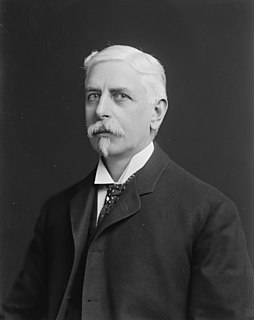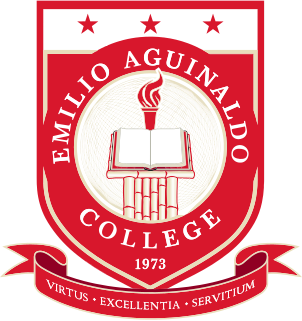
Veterinary medicine is the branch of medicine that deals with the prevention, management, diagnosis, and treatment of disease, disorder, and injury in animals. Along with this, it deals with animal rearing, husbandry, breeding, research on nutrition, and product development. The scope of veterinary medicine is wide, covering all animal species, both domesticated and wild, with a wide range of conditions that can affect different species.

A veterinarian (vet), also known as a veterinary surgeon or veterinary physician, is a medical professional who practices veterinary medicine. They manage a wide range of health conditions and injuries in non-human animals. Along with this, vets also play a role in animal reproduction, animal health management, conservation, husbandry and breeding and preventive medicine like animal nutrition, vaccination and parasitic control as well as biosecurity and zoonotic disease surveillance and prevention.
The Texas A&M College of Veterinary Medicine & Biomedical Sciences is a college of Texas A&M University in College Station, Texas. The college was founded in 1916 and is one of only 31 colleges of veterinary medicine in the United States and Canada. It is consistently ranked as one of the top 5 vet schools in the country, according to U.S. News. The college offers an undergraduate program in Biomedical Sciences, a professional Doctor of Veterinary Medicine program, and numerous graduate programs relating to veterinary medicine and epidemiology.

The University of the Philippines Manila (UPM) is a state-funded medical and research university located in Ermita, Manila, Philippines. It is known for being the country's center of excellence in the health sciences, including health professional education, training, and research. It is the oldest of eight constituent universities of the University of the Philippines System, even predating the founding of UP by three years. Originally established on December 1, 1905, as the Philippine Medical School and later called as the UP College of Medicine and Surgery on June 10, 1907. It was renamed as University of the Philippines Manila in 1983.
The University of the East, also known as UE, is a private university located in Manila, Philippines. Founded in 1946, business tycoon Lucio Tan acquired the university in 1990. UE was once labeled as the "largest university in Asia" when its enrollment in the past reached over 65,000 students.

Daniel Elmer Salmon was an American veterinarian. He earned the first D.V.M. degree awarded in the United States, and spent his career studying animal diseases for the U.S. Department of Agriculture. The bacterial genus Salmonella, which was discovered by an assistant, was named in his honor.

West Visayas State University is a public normal research university located in La Paz, Iloilo City, Western Visayas region of the Philippines. It was established in 1924 as Iloilo Normal School under the tutelage of the Thomasites, but dates back its founding in 1902 as a part of Philippine normal school system with Iloilo National High School established by the American colonial government. It later became West Visayas State College in 1965 and acquired its university status becoming West Visayas State University in 1986.

Emilio Aguinaldo College (EAC) is a private, non-sectarian institute of education located in Manila, Philippines. It runs under the management of the Yaman Lahi Foundation Incorporated.

Our Lady of Fatima University also referred to by its acronym OLFU is a private, nonsectarian, coeducational basic and higher education institution in Valenzuela City, Metro Manila, Philippines known for its allied medical sciences programs. It also offers Basic Education programs and Senior High School. It was established in year 1967 by Jose Olivares and his son-in-law, Dr. Vicente M. Santos Sr. OLFU currently has six campuses located in Valenzuela City and Quezon City in Metro Manila, Antipolo City in Rizal, San Fernando City in Pampanga, Cabanatuan City in Nueva Ecija and Santa Rosa City in Laguna.

The Professional Regulation Commission, otherwise known as the PRC, is a three-man commission attached to Department of Labor and Employment (DOLE). Its mandate is to regulate and supervise the practice of the professionals who constitute the highly skilled manpower of the country. As the agency-in-charge of the professional sector, the PRC plays a strategic role in developing the corps of professionals for industry, commerce, governance, and the economy.

The University of the Philippines Manila College of Medicine (CM) is the medical school of the University of the Philippines Manila, the oldest constituent university of the University of the Philippines System. Its establishment in 1905 antedates the foundation of the UP System and makes it one of the oldest medical schools in the country. The Philippine General Hospital, the national university hospital, serves as its teaching hospital.

The Manila Central University also referred to by its acronym MCU, and formerly named as the Escuela de Farmacia del Liceo de Manila) is a private, non-sectarian, non-stock basic and higher education institution located on EDSA, Caloocan, Philippines. It was founded in 1904 by Dr. Alejandro M. Albert who also was its first Director.
American College of Zoological Medicine was established in 1983 as an international specialty organization of veterinarians with special expertise in zoological medicine.

The Central Colleges of the Philippines, Inc. also known as CCP is a coeducational educational institution located in Doña Imelda, Quezon City, Metro Manila, Philippines. Formerly known as the Polytechnic Colleges of the Philippines, Inc. (PCP), CCP was established on January 18, 1954, with an enrollment of 300 students. CCP has eleven academic programs or colleges at present.
The College of Veterinary Medicine (CVM) is one of the 11 degree-granting units of the University of the Philippines at Los Baños. It is the country's first veterinary school.
The American Association of Bovine Practitioners (AABP) is a nonprofit association of veterinarians who specialize in the care and treatment of bovines such as cattle. AABP has 13 districts covering the United States and Canada, but welcomes membership by veterinarians and veterinary students worldwide. It is the only association for bovine veterinarians, and the largest such association in the world.

Virgen Milagrosa University Foundation (VMUF) is a privately supported, co-educational, Catholic university in San Carlos, Pangasinan, Philippines. It was founded in 1958 by Dr. Martin Posadas and Dr. Rosalina Q. Posadas.

The history of physical therapy in the Philippines relates how physical therapy started in the Philippines and how it evolved as a profession through three significant phases in the history of the Philippines: from the American era leading to the Japanese occupation of the islands during World War II, and up to the modern-day time period of the independent Philippine Republics. It was introduced in the Philippines ahead of rehabilitation medicine.

José F. Fabella was a Filipino physician and a public health advocate regarded in a biography as the "father of public health and social welfare in the Philippines."
The Association of American Veterinary Medical Colleges (AAVMC) represents colleges and schools of veterinary medicine in the United States, Canada, and internationally. It advocates for issues related to veterinary medical education, oversees the accreditation process for veterinary medical schools and colleges along with the American Veterinary Medical Association, and manages the Veterinary Medical College Application Service.
















